|
ROTAREX Compact Line and ABC Powder systems
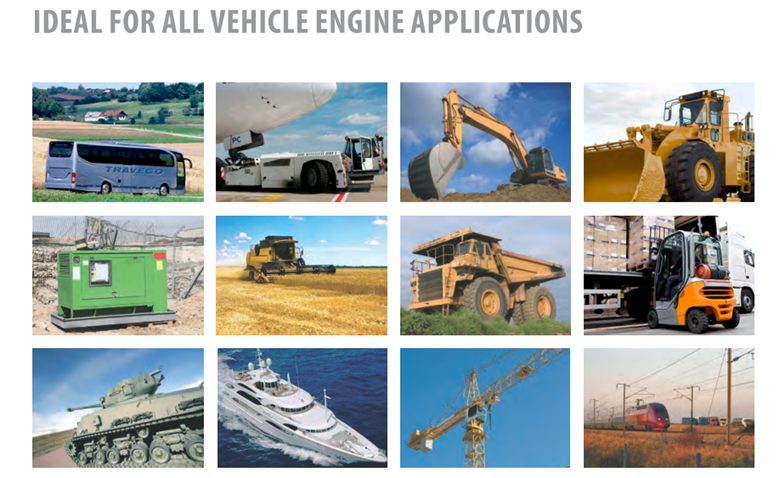
Engine Fire Suppression Systems in Commercial Vehicles
Vehicle engine fire suppression systems have been available in
the UAE for more than a decade but have not seen widespread
adoption due to lack of regulations.
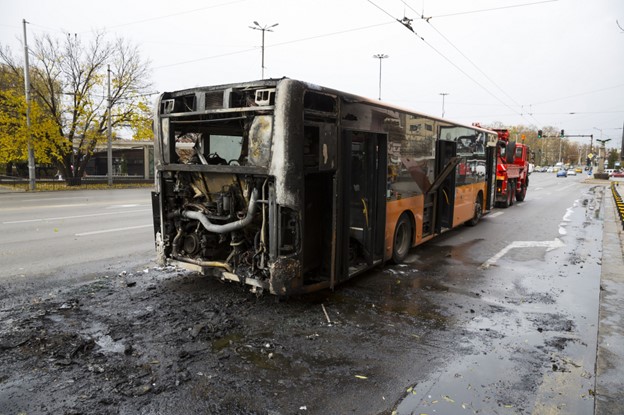
Statistics indicate that 60–70% of vehicle fires originate in
the engine compartment and surrounding areas where temperatures
are high and combustible materials are installed. Engine fires
can cause extensive damage to vehicles, and in many cases, claim
lives. The first line of response in case of such fire incidents
is a vehicle suppression system working in combination with a
fire detection system. A reliable fire suppression system could
extinguish a fire in the engine compartment within 4–5 seconds.
Currently, all public transport buses in the UAE have fire
suppression systems installed in their engine compartments. The
Roads and Transport Authority (RTA) in Dubai and Department of
Transport (DOT) in Abu Dhabi have their own specifications for
procurement of public transport buses with engine fire
suppression systems.
The first time a regulation was introduced in the UAE for
private transport fire suppression systems was for school buses
in 2009, when the RTA specified in its School Transport Manual
that all 2009 school bus models operating in Dubai were required
to have fire suppression systems. Within the next two years, the
DOT (Department of Transportation) introduced a similar
regulation for school buses operating in Abu Dhabi. The other
Emirates have adopted fire suppression systems as part of their
safety guidelines and best practices but have not yet enforced
regulations.
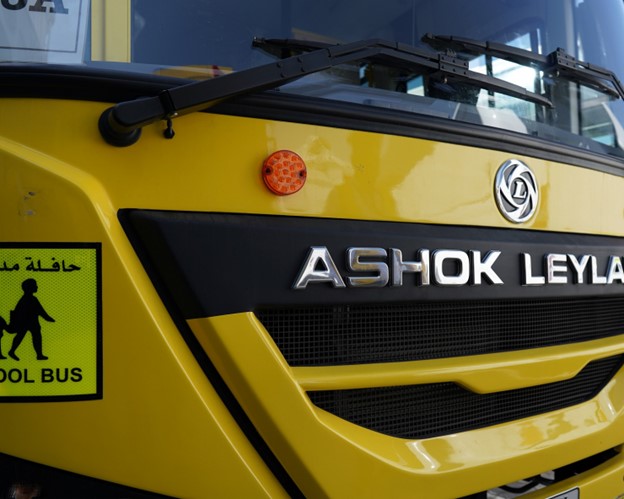
Swaidan Trading Company, one of the largest distributors of
buses in the UAE representing brands such as Ashok Leyland,
Sunwin, Optare and VDL, was among the first companies to supply
school buses with inbuilt fire suppression systems. Since 2009,
the distributor has delivered over 6,000 Ashok Leyland and
Sunwin school buses with fire suppression systems in the UAE,
mainly to large fleet operators such as Emirates Transport and
School Transport Services. The school buses have both
front-engine and rear-engine configurations; while Sunwin
supplies rear-engine buses, Ashok Leyland supplies front-engine
buses in the UAE.
Harris Kaladi, general manager, commercial vehicles and heavy
equipment division, Swaidan Trading Company, says: “Fire
suppression systems are crucial for passenger safety. In the
case mild fires, it’s possible to evacuate passengers and
minimize vehicle damage. When fires occur due to collisions
making it difficult or impossible for passengers to evacuate
from the vehicle, a fire suppression system could be the life
saver.”

Harris Kaladi, general manager, commercial vehicles and heavy
equipment division, Swaidan Trading Company.
Several factors are responsible for significant temperatures
increase in engine compartments. Many engine fires occur due to
poor maintenance of vehicles and driver errors, according to
Harris.
“We’ve not seen cases of fire suppression system activation in
vehicles that are well maintained are operated by well-trained
drivers. However, a few cases have been reported where drivers
have pressed the manual emergency button accidently and
activated the fire suppression system. One of our school bus
customers faced such a situation when a bus driver stuck in
traffic switched on the exhaust brake accidently, partially
closing the exhaust path and slowing down the vehicle. The
driver ignored the warning signal and continued driving in the
same manner. This caused pressure to build up in the exhaust
manifold and increased the engine temperature rapidly, which
activated the fire suppression system. In another case, a
foreign object, an aluminum foil, entered the exhaust manifold
and increased the engine compartment temperature, leading to
activation of the fire suppression system,” says Harris.
Harris warns that once a fire suppression system is activated,
the vehicle must be inspected and serviced in a workshop.
“The driver should move the vehicle to the side of the road and
take it to the nearest workshop. The vehicle can be driven
provided the inspection is done because there’s a chance of
re-ignition due to fuel leakage. We’ve supplied an additional
safety feature for Sunwin buses, based on a customer
requirement. A fuel cut-off system that activates along with the
fire suppression system was installed in the Sunwin buses to
prevent additional fuel leakage into the engine. After the fuel
suppression system is triggered, the safety mechanism does not
allow the driver to start the vehicle; instead, a bypass switch
is installed, which can be operated only by an authorized
person,” says Harris.
Swaidan Trading also offers the Maxus, a 16-seater minibus
retrofitted with fire suppression systems for school transport.
“Maxus is the only minibus brand that has approval from the RTA
and DOT to be registered and operated as a school bus. We have
won a contract to supply 160 Maxus minibuses with retrofitted
fire suppression systems to Emirates Transport,” says Harris.
The demand for retrofitted fire suppression systems in the UAE
increased sharply a few years after 2009 when the RTA and DOT
extended their regulations to bus models manufactured before
2009. Swaidan Trading entered the retrofit business in 2017 as
the UAE distributor for Rotarex vehicle engine suppression
systems.
“We entered the retrofit business because of the market
opportunity and to counter the entry of inferior, unreliable
systems that had no international certifications. We opted for
Rotarex because it is among the few companies that is certified
according to the UNECE R107 standard by Sweden-based research
institute RISE, although compliance with the standard is not
mandatory in the UAE. Nevertheless, we wanted the most reliable
system in line with the safety assurance we provide for our
buses,” says Harris.
So far, the company has retrofitted more than 3,000 buses in the
UAE.
“The UAE has a significant number of pre-2009 buses that do not
have retrofit systems. Considering the maximum lifespan of a
school bus in the UAE is 15 years, the phase out of the older
buses will happen within the next three years,” says Harris.
Rotarex Compact Line and ABC Powder systems
Swaidan Trading offers two types of Rotarex fire suppression
systems for commercial vehicles: the FireDetec Compact Line
system and ABC Powder system.
The FireDetec Compact Line system is designed for small and
large engines compartments (below and above 4m3) in all kinds of
motor-driven vehicles, ships and generators.
The Compact Line system has two kinds of activation: the
FireDetec sensor tubing and electromagnetic (EM) actuation. The
system can use either FireDetec TS55, a liquid-based agent
(water mist) with glycol-free antifreeze, or Berki Cold, a
biological foam concentrate, as the extinguishing agent.
An external power source is not required for fire detection or
suppression, except for the EM version which is actuated
electrically. The combination of the extinguishing agent
FireDetec TS55 or Berki Cold and nitrogen is suitable for
suppressing fires which are triggered by oils, gasoline,
diesels, lubricants or other combustible liquids.
The Compact Line system is made from extruded aluminum alloy and
it is resistant to corrosion. The Compact Line has a
dual-chamber, coaxial cylinder system, with a high-pressure
inner cylinder filled with nitrogen gas and low-pressure outer
cylinder with the extinguishing agent.
The nitrogen cylinder has a filling pressure of 200 bar at 20°C.
During normal operation, the outer cylinder serves as additional
protection for the inner high-pressure nitrogen cylinder. The
cylinder is available in three capacities – 4L, 7L and 12L.
Rear-engine buses require higher volumes of extinguishing agent
than front-engine buses.
The heat-sensitive FireDetec sensor tubing is connected to the
Compact Line and pressurized with 16-bar nitrogen gas. The
tubing bursts at approximately 110°C and triggers the fire
suppression process. If an electronic fire detection system is
used or if the FireDetec sensor tubing is not desired, the EM
actuator can be used, which upon reception of an external
signal, will trigger the release of extinguishing agent.
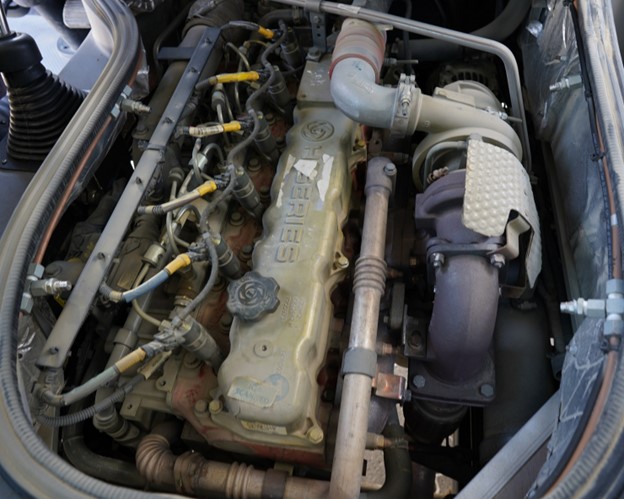
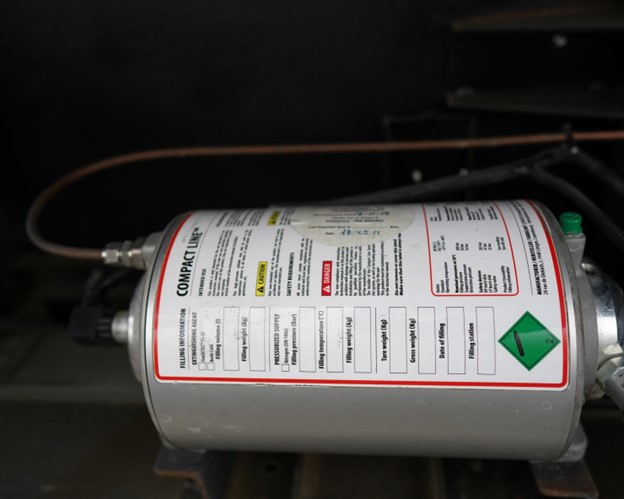
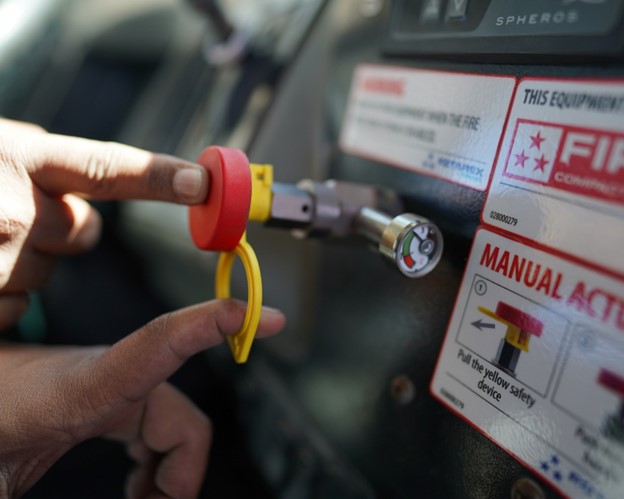
Rotarex Compact Line system installed in an Ashok Leyland school
bus.
When the FireDetec sensor tubing bursts or when the system is
actuated by the electromagnetic actuator, a pressure builds up
behind the annular piston inside the Compact Line. The annular
piston moves and releases the extinguishing agent. The
extinguishing agent flows through the discharge line to the
nozzles, which distributes the extinguishing agent on the
protected area. The number of and distance between nozzles can
be adjusted according to the size and geometry of the protected
area. While the Compact Line is releasing the extinguishing
agent, the pressure and the flow rate remain constant.
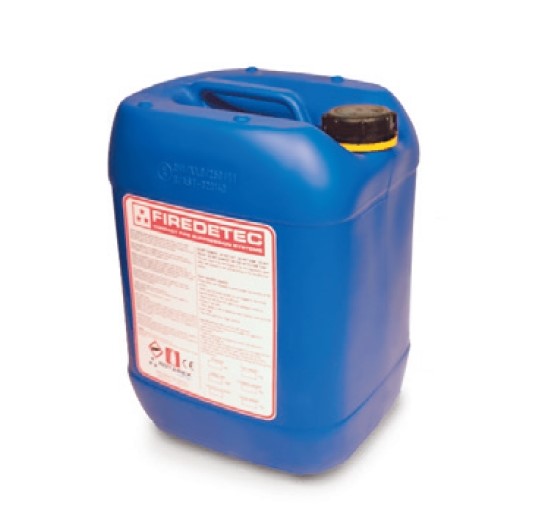
The second type of fire suppression system for commercial
vehicles is the ABC Powder system, which uses the ABC 90 dry
chemical as the extinguishing agent. When in service, the sensor
tubing is pressurized with dry nitrogen to 15 bar. If a flame-up
occurs, the heat of the fire causes the pressurized sensor tube
to burst at the hottest spot. The sudden tube depressurization
actuates the special pressure differential valve and discharges
the ABC 90 dry chemical agent. Swaidan Trading supplies the
agent in 6kg cylinders.
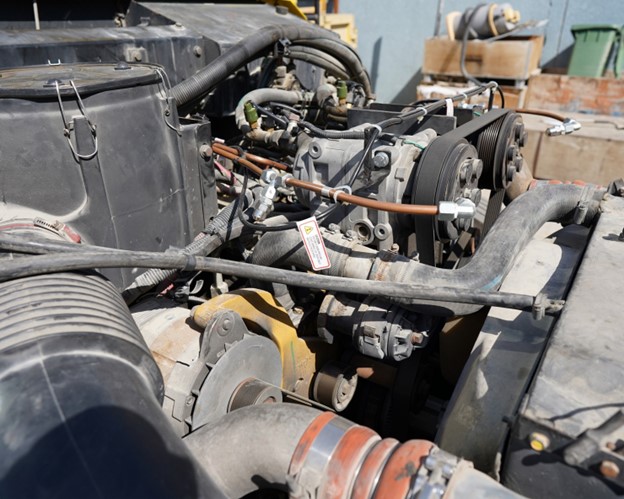
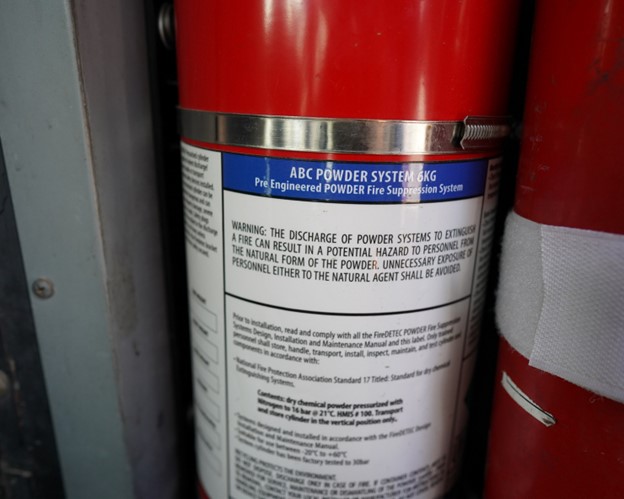

Rotarex ABC Powder system installed in a bus.
“Both the systems are effective for fire suppression. ABC Powder
is not compliant with the UNECE standard, which makes it a
cheaper alternative to the Compact Line system. Because UNECE
compliance is not mandatory in the UAE, price-conscious customer
opt for ABC Powder. If safety is the top priority, then Compact
Line is the superior system,” says Harris.
“PLANT MACHINERY VEHICLES” Article. |
